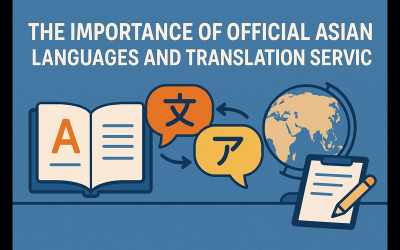When most people think of translation they think of a person sitting behind a desk translating one word at a time. Let’s take the concept of translation a little further and into the modern era. There is, in fact, a very technological side to online/computer translation backed by machine learning and artificial intelligence. The developments have been extraordinary, and the options out there when it comes to translation are vaster than you can imagine.
To begin with, the most standard of Machine Learning Translation is Statistical.
Statistical machine learning uses predictive algorithms to teach a computer how to translate text. This is done essentially through guessing. By comparing text from two different languages, looking for patterns, grammar and syntax and predicting the most probable output based all of the data and text collected previously. Statistical machine learning uses different subgroups for its analysis including word-based, phrase-based, syntax-based, and hierarchical phrase-based.
Statistical machine learning has become extremely popular. It automates an otherwise tedious task. However, its only downfall is that this system needs lots of material in both languages to pull data and patterns from. This can be difficult to gather and the less there is, the less accurate translations are.
Given the restrictions of statistical machine learning a newer form of machine learning translation was developed.
A more advanced technology: Neural machine translation.
This technology is known to be much more advanced and accurate in its translations in comparison to statistical machine learning. But, how does neural machine translation work and why is it better? The biggest difference between statistical and neural machine translation is that it is based on a model not simply based on patterns, but replicates the functions of the human brain and is able to assess content from various sources before generating output. It is backed by deep learning and generates techniques to translate based not only on patterns, but existing statistical models (algorithms processing linguistic rules) and therefore create a higher quality of translation. Also, machine translation is extremely fast translation. The most world-renowned example of neural machine translation technology is Google Translate. It is a neural machine translation system that is used for almost every single kind of text across all industries. Given its popularity, the data collection is vast and expanding daily meanings its translation quality only continues to increase.
To take neural machine learning translation even further, attention based neural machine translation was developed.
Attention based neural machine translation was created to enhance and increase the performance of neural machine translation. It does this by focusing on subsets of the sentence structure during translation. This ultimately increases the quality and accuracy of sentence translation even further. As it not only looks at one word but the makeup and origin of that one word to recognize even more patterns when it comes to grammar, spelling, conjugation, etc.
Open source neural machine translation is yet another technological advancement of machine learning translating.
This system was developed to enhance the efficiency, accuracy, and readability of text. It does this through internal extensions allowing additional tasks and capabilities such as text generation, tagging, summarization, images to text and even speech to text. This allows for much more state of the art technology and therefore an extremely high quality of translation. It extends beyond just the text but includes additional capabilities on the user side making it more useful for consumers whatever their translation needs may be.
As you can see the technological capabilities mentioned here are impressive, and such technologies are only the beginning. The advancement of computer translating is truly phenomenal and will only continue to increase in time. The data collection capabilities will only further develop and allow for a more reliable technology at the ready, to translate texts from all languages within seconds.
Certified Translation Services
Get your documents translated and certified by a professional translator in 120+ languages with 24 hour delivery.
Get a Quote Rana Maalouf
Rana Maalouf

